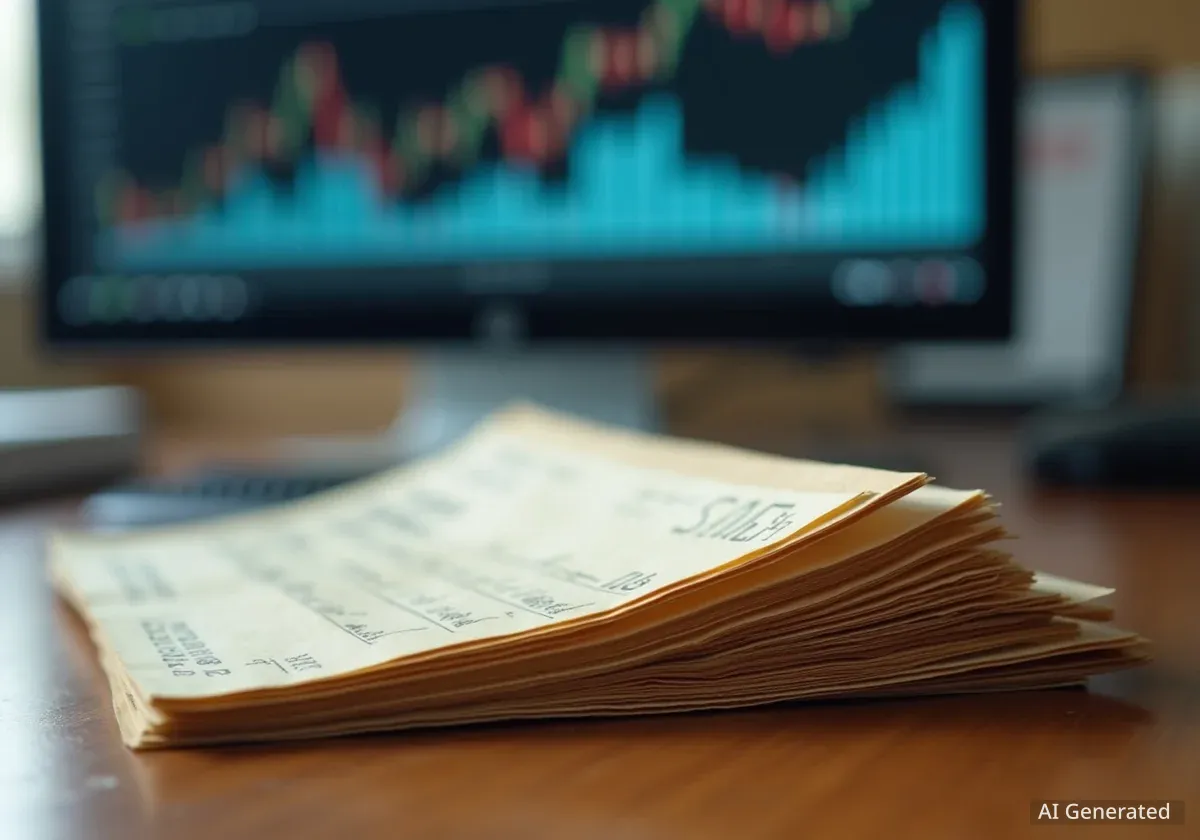The Social Security Administration is transitioning away from paper checks for benefit payments, with a firm deadline set for September 30, 2025. This change, mandated by the U.S. Treasury Department, will require nearly all recipients to switch to an electronic payment method to ensure uninterrupted receipt of their benefits.
The move is designed to enhance security, reduce administrative costs, and provide beneficiaries with faster, more reliable access to their funds. Recipients who currently receive paper checks must take action to select an electronic option before the deadline.
Key Takeaways
- Mandatory Change: The U.S. Treasury will phase out most paper checks for Social Security benefits after September 30, 2025.
- Action Required: Beneficiaries must switch to an electronic payment method to avoid disruptions.
- Payment Options: The two primary electronic methods are direct deposit into a bank account or the Direct Express® debit card.
- Limited Exceptions: Waivers may be available for individuals aged 90 and older and in other specific circumstances.
Why the Shift to Electronic Payments is Necessary
The federal government's decision to phase out paper checks is driven by concerns over security, efficiency, and cost. Paper checks are significantly more vulnerable to theft, loss, and postal delays, which can cause significant hardship for individuals who rely on these funds for daily living expenses.
Electronic payments provide a more secure and dependable delivery system. Funds are transferred directly and are typically available on the scheduled payment date, eliminating the uncertainty associated with mail delivery. This transition is part of a broader government initiative to modernize federal payment systems.
Cost and Security Benefits
According to U.S. Treasury data, issuing a paper check costs the government significantly more than an electronic transfer. Furthermore, instances of reported fraud and theft are substantially lower with electronic payments compared to mailed checks, making the new system safer for beneficiaries.
By moving away from printing and mailing millions of checks each month, the federal government anticipates substantial savings for taxpayers. These resources can be reallocated to improve other services provided by the Social Security Administration and other federal agencies.
Understanding Your Electronic Payment Options
Social Security beneficiaries have two primary options for receiving their payments electronically. The choice depends on individual preference and access to banking services. Both methods are designed to be secure and convenient.
Direct Deposit to a Bank Account
Direct deposit is the most common and recommended method for receiving Social Security benefits. With this option, your monthly payment is automatically deposited into your checking or savings account at a bank or credit union.
Key advantages of direct deposit include:
- Speed: Funds are available in your account on the payment date without any delay.
- Security: It eliminates the risk of lost or stolen checks.
- Convenience: There is no need to visit a bank to deposit a check.
Setting up direct deposit is a straightforward process. Beneficiaries can provide their bank account information online through their my Social Security account on the SSA website. Alternatively, they can call the SSA's toll-free number or visit their local Social Security office for assistance.
The Direct Express® Debit Card
For individuals who do not have a bank account, the Treasury Department offers the Direct Express® debit card. This is a prepaid debit card where your Social Security benefits are automatically loaded each month.
How the Direct Express® Card Works
The Direct Express® card functions like a standard debit card. Cardholders can use it to make purchases at stores that accept Debit MasterCard®, pay bills online or over the phone, and get cash back from retailers or at ATMs. The card is offered at no cost and has no monthly fees for basic services.
This option provides a safe and easy way to access funds without needing a traditional bank account. To enroll in the Direct Express® program, individuals can call the dedicated enrollment center or sign up online. The card is mailed to the recipient's address and activated upon receipt.
Exceptions to the Electronic Payment Rule
While the mandate for electronic payments is broad, the Treasury Department recognizes that it may not be suitable for everyone. As a result, a limited number of exceptions, or waivers, are available for certain individuals.
"The Treasury Department may grant waivers to the electronic payment requirement in specific situations to prevent hardship for vulnerable beneficiaries."
The most common exceptions include:
- Age: Individuals who are 90 years of age or older as of the deadline may be eligible to continue receiving paper checks.
- Geographic Barriers: People living in remote areas without access to a financial institution that offers electronic payment services may qualify for a waiver.
- Mental Impairment: A waiver may be granted if a mental disability prevents an individual from managing an electronic bank account or debit card.
It is important to note that these exceptions are not automatic. A beneficiary or their representative must formally request a waiver from the Treasury Department. Each request is reviewed on a case-by-case basis to determine eligibility based on established criteria.
How to Prepare for the September 2025 Deadline
The Social Security Administration urges all beneficiaries still receiving paper checks to transition to an electronic method well before the September 30, 2025, deadline. Waiting until the last minute could risk a delay in receiving payments.
To make the switch, you will need your Social Security number and your bank account information (routing and account numbers) for direct deposit. For the Direct Express® card, you will need your Social Security number and mailing address.
Steps to take now:
- Review your payment method: If you receive a paper check, decide whether direct deposit or the Direct Express® card is right for you.
- Gather necessary information: Have your bank details or personal information ready.
- Make the change: Use the SSA website, call their toll-free number, or contact your bank to set up direct deposit. To enroll in Direct Express®, use their official website or phone number.
The SSA has been actively communicating this change through mailings and public announcements to ensure all affected individuals are aware of the upcoming deadline and the steps they need to take.





